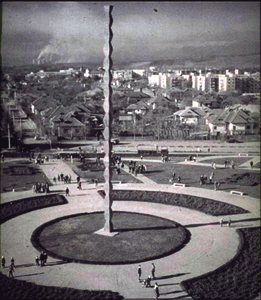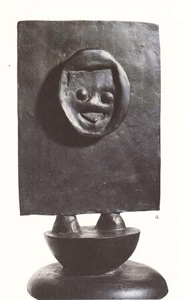
Page 9 of 17
Read the text and study the images below then move on to page 10.
7. Scale and proportion
The scale of a work is extremely important in the way we read it, perhaps particularly so for sculpture. Because it occupies our space, sculpture has an overwhelming presence on grand scale, but has a quite different effect when it is tiny and can be held in the hand. There are similarities with how we respond to scale in real life, with a very large dog seeming threatening, for example, and a small one cute - though experience may teach us that size is no indicator of temperament!


above Brancusi, Endless Column, 1937, iron, 2935 cm. Tīrgu Jiu Public Park, Romānia.
above Max Ernst, Cheri Bibi, bronze, 34 x 18 cm.
Just as we can't be sure of the size of a dog in a photograph, scale is difficult to determine when we are studying sculpture from books. So it is very important to look directly at as many sculptures as possible to begin to understand the effect of scale. Always check the caption to a photograph of sculpture to see what size it is, and compare this with the real experience of seeing a sculpture of that scale.